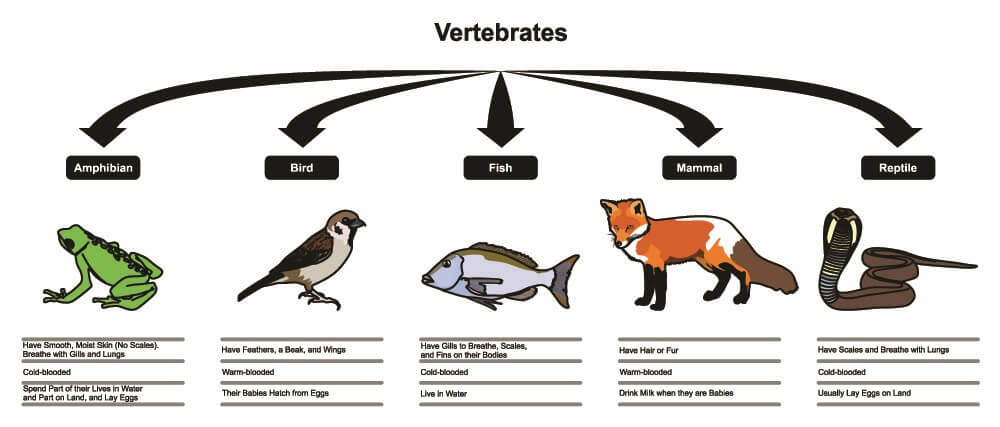Definition
Any vertebrate, classified under subphylum Vertebrata, is an animal with a backbone. This group consists of several broad classes: fish, amphibians, birds, reptiles, and mammals. The word vertebrate refers to the bony vertebral column. All classes of vertebrate have developed brains, internal skeletons to which muscles can attach, two eyes, closed circulatory systems, and muscular mouths.
What is a Vertebrate?
Perhaps a better question would be “what does vertebrate mean”? The Latin term for the bony joint of the spinal column is vertebratus. We have all seen pictures, models, and reconstructions of various skeletons online, in textbooks, or in museums. The spine is instantly recognizable even in very different classes of animals.
Vertebrate characteristics begin at the notochord – a supportive, elastic rod found on all Chordates. When this notochord becomes covered with bony material during fetal development, the result is a vertebrate.
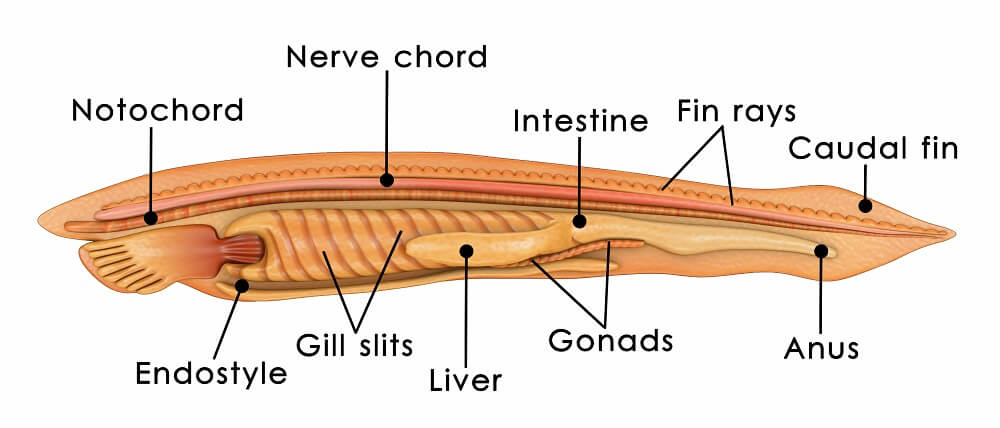
Vertebrates in the Phylogenetic Tree
A vertebrate is a member of the Animalia or Metazoa kingdom. The six-kingdom classification system is starting to look a little dated thanks to our growing knowledge of genetics; however, it is still used. Kingdom Animalia is composed of eukaryotic, multicellular, and heterotrophic (do not produce their own energy) organisms.
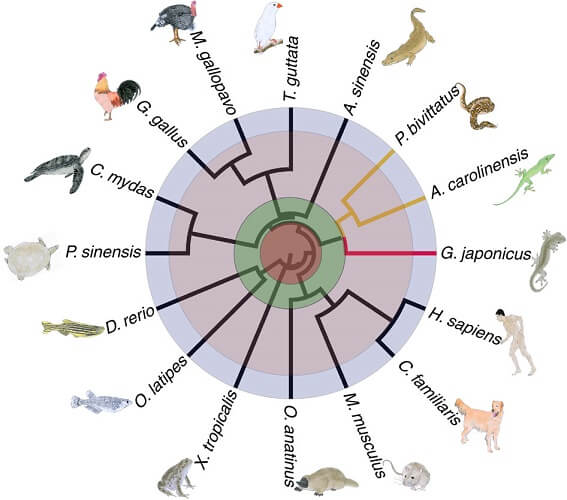
Vertebrate classification is complex due to the sheer numbers of animal traits. Kingdom Animalia is divided into two subphyla: invertebrates and vertebrates. Vertebrates make up less than 5% of all known animals. Invertebrates, without an internal skeleton (but often with an external skeleton or exoskeleton) comprise approximately 95% of all known animals.
Subphylum Vertebrata is further split into seven vertebrate classes:
- Mammalia (mammals)
- Aves (birds)
- Reptilia (reptiles)
- Amphibia (amphibians)
- Agnatha (jawless fish)
- Osteichthyes (bony fish)
- Chondrichthyes (cartilaginous fish)
Class Mammalia
All mammals have hair, three ear bones, and mammary glands. These are the distinguishing and unique features of class Mammalia.
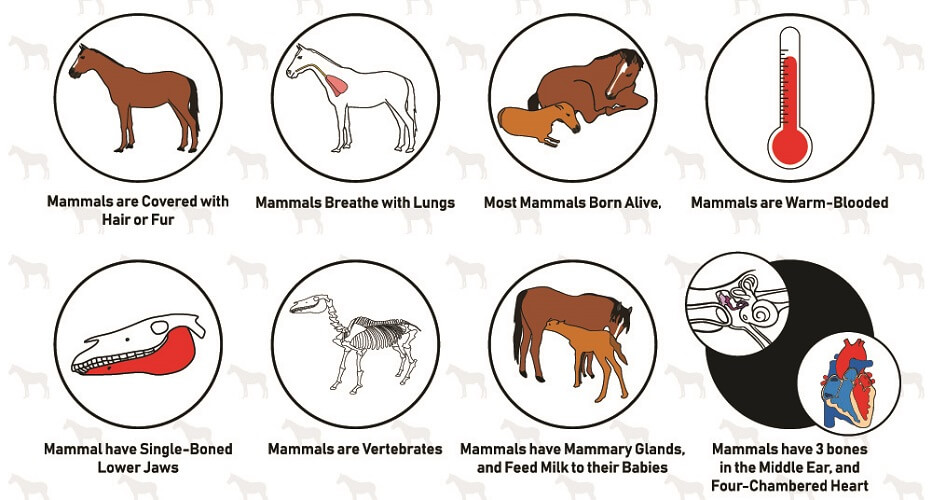
Less unique characteristics within the larger scope of subphylum Vertebrata include giving birth to live young (livebearers), warm blood (endothermic), a heart comprised of four chambers, internal fertilization, and a high level of parental care.
Class Mammalia includes more than 5,000 species. Three clades (divisions) exist based upon how mammals reproduce: Placentalia (infraclass Eutheria), Marsupialia (infraclass Metatheria), and Monotremata (subclass Prototheria).
Placentals make up the majority of class Mammalia and all of these feature females that can carry a fetus – fed by the placenta – in the uterus. Infraclass Placentalia splits into higher orders (magnorders) that separate creatures such as the hyrax, armadillo, sloth, shrew, and their surprising cousin the elephant from the rest of the mammalian class. Classification occurs according to common ancestry.
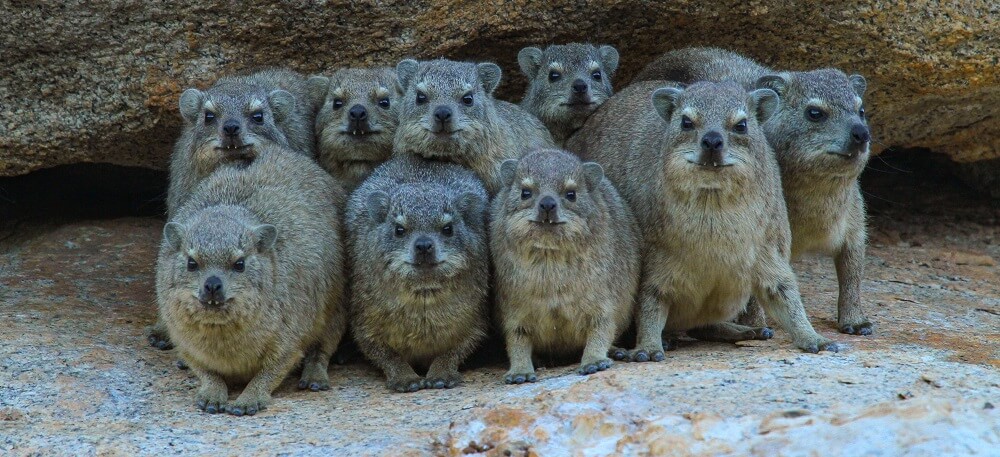
Marsupials are closer relatives to placentals than they are to monotremes. Marsupials and placentals are both of the Theria subclass that describes live-young bearers. However, marsupials give birth to extremely immature young that develop further in the mother’s pouch.
Subclass Prototheria contains various orders, most of which are now extinct. Because of this, the order in which today’s mammalian egg-producers are found is sometimes referred to as a subclass – Monotremata. Not only do these mammals (several echidna species and the platypus) lay eggs, they also feed their young – once hatched – from mammary glands. Monotremes also feature a cloaca – a single opening for feces, urine, and sexual reproduction.
One vertebrate example from class Mammalia is the platypus.

- Domain: Eukarya – organisms containing cells in a nuclear envelope.
- Kingdom: Animalia – multicellular, heterotrophic, and eukaryotic animals.
- Phylum: Chordata – animals with a notochord.
- Subphylum: Vertebrata – animals with a bony notochord and brain within the central nervous system.
- Class: Mammalia – vertebrates with three ear bones, mammary glands, and hair.
- Subclass/Order: Monotremata – egg-producing mammals.
- Family: Ornithorhynchidae – duck-billed Monotrematae with flat tails.
- Genus: Ornithorhynchus – all other Ornithorhynchidae genera are extinct
- Species: Ornithorhynchus anatinus – anatinus means ‘resembling a duck’.
Confused about when to use italics for classification? The Centers for Disease Control and Prevention website tells us how.
“Italicize family, genus, species, and variety or subspecies. Begin family and genus with a capital letter. Kingdom, phylum, class, order, and suborder begin with a capital letter but are not italicized.”
Class Aves
Class Aves is a group of warm-blooded animals with high body temperatures of approximately 106°F (41.1°C). Other specific features are body shape and divisions into head, neck, trunk, and tail. In birds, the front legs have become wings and the body is covered in a horny layer of feathers. Feather help to conserve the higher body heat as well as aid in flight.
Bird bones are hollow (pneumatic) and extremely light. The skull has a single occipital condyle (joint between the skull and spinal column) that allows a greater degree of rotation at the neck. Beaks do not contain teeth and bird digestive systems contain a muscular gizzard that crushes swallowed food. The crop stores undigested food before it reaches the stomach. Birds also have a cloaca and do not have a bladder.
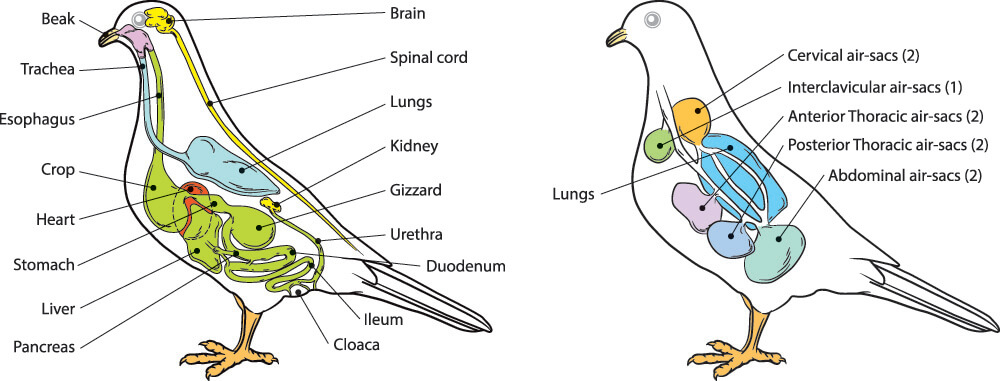
The avian respiratory system includes additional thoracic and abdominal air sacs (see above image). Airflow is unidirectional – fresh oxygen can be taken in even when a bird exhales. It is common knowledge that all birds lay eggs. Finally, birds have a keeled sternum that allows for the attachment of strong flight muscles. This is also the case with flightless birds.
One vertebrate example from class Aves is the snowy owl.
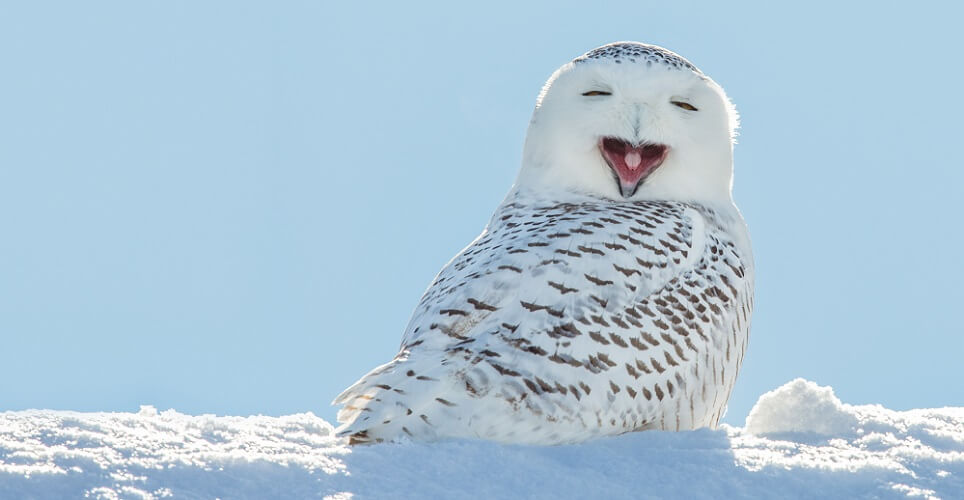
- Phylum: Chordata – animals with a notochord.
- Subphylum: Vertebrata – animals with a bony notochord and brain within the central nervous system.
- Class: Aves – egg-laying vertebrates with wings, feathers, lightweight skeleton, warm blood, beak, keeled sternum, and unique respiratory system.
- Subclass/Order: Strigiformes – all owls with facial discs, fleshy tongues, highly developed eyes and ears, low-noise flight, and powerful claws.
- Family: Strigidae – ‘true owls’ with circular facial discs, thickly-feathered legs, large head, and downward hooked beak.
- Genus: Bubo – larger eagle and horned owls with (in the case of horned owls) ear tufts.
- Species: Bubo scandiacus – scandiacus refers to Scandinavia, where this particular species of owl was first observed when classified in 1758.
Class Reptilia
Reptiles are cold-blooded vertebrates with scales or scutes. As with birds, they have a single occipital condyle which allows them to rotate the head further than mammals. Reptiles are tetrapods (four-footed) and have a single external nasal opening, a cloaca, and a tail. They also lay eggs.

This vertebrate class includes lizards, snakes, turtles, and crocodiles. They have survived three mass extinction events and our current species are the result of a relatively slow evolutionary curve. This diversity and sometimes unique characteristics – such as the ability to freeze in cold weather winter and thaw (alive) in warmer weather – is a popular topic of discussion among paleontologists and zoologists.
One reptilian vertebrate example is the Galápagos tortoise.
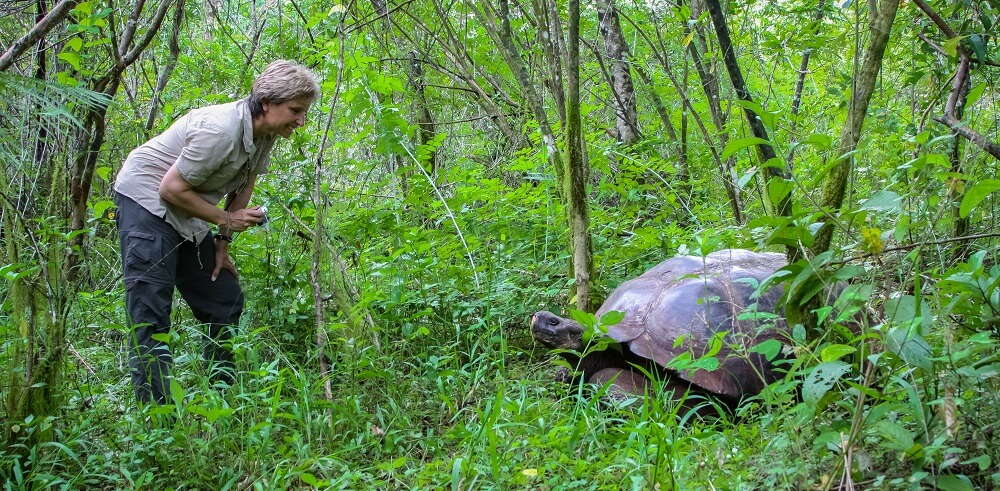
- Phylum: Chordata – animals with a notochord.
- Subphylum: Vertebrata – animals with a bony notochord and brain within the central nervous system.
- Class: Reptilia – cold-blooded, egg-laying, tetrapod (four-legged) vertebrates with scales or scutes.
- Subclass/Order: Testudines – reptiles with a bony or cartilaginous shell.
- Family: Testudinae – tortoises or land-dwelling Testudines.
- Genus: Chelonoidis – a South American group of tortoises.
- Species: Chelonoidis nigra – the black tortoise of the Galápagos.
Class Amphibia
Vertebrate amphibians can live in water or on land, although they are only found in freshwater. The word amphibian means ‘two lives’. Class Amphibia is a group of cold-blooded, egg-laying animals with or without limbs, eyelids, tails, gills, scales, and/or neck. The skin is often part of an amphibian’s respiratory system and is usually moist for increased gas diffusion efficiency.
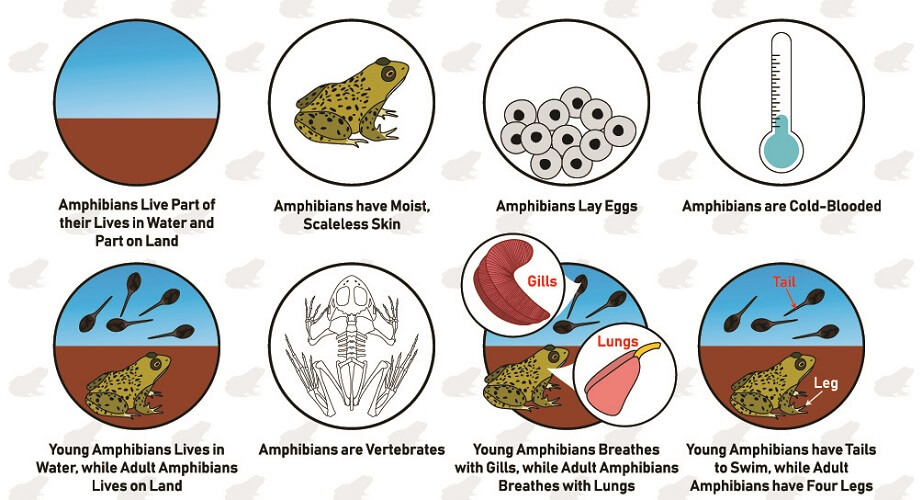
All amphibians have teeth and a tongue, a cloaca, and two occipital condyles – amphibians cannot rotate the head as well as birds and reptiles. Their hearts have three chambers (two atria and one ventricle). Only salamanders can fertilize eggs internally but all amphibian eggs develop into larvae (free-living embryos) outside the body.
Amphibians take advantage of at least two of four means of oxygen intake – via the lungs (pulmonary respiration), mucous membranes (buccopharyngeal respiration), the skin (cutaneous respiration), and/or a set of gills (branchial respiration).

A vertebrate example of an amphibian is the axolotl:
- Phylum: Chordata – animals with a notochord.
- Subphylum: Vertebrata – animals with a bony notochord and brain within the central nervous system.
- Class: Amphibia – cold-blooded, egg-laying, land and freshwater-dwelling vertebrates with multiple respiration methods.
- Subclass/Order: Caudata – salamanders and newts with long bodies and tails and short limbs.
- Family: Ambystomatidae – heavier salamanders often called mole salamanders that reproduce via internal fertilization.
- Genus: Ambystoma – North and South American salamanders.
- Species: Ambystoma mexicanum – a neotenic Mexican salamander that remains in larval form throughout its life. Very few species of amphibians express full neotony. Delayed development or partial neotony is not common in Kingdom Animalia.
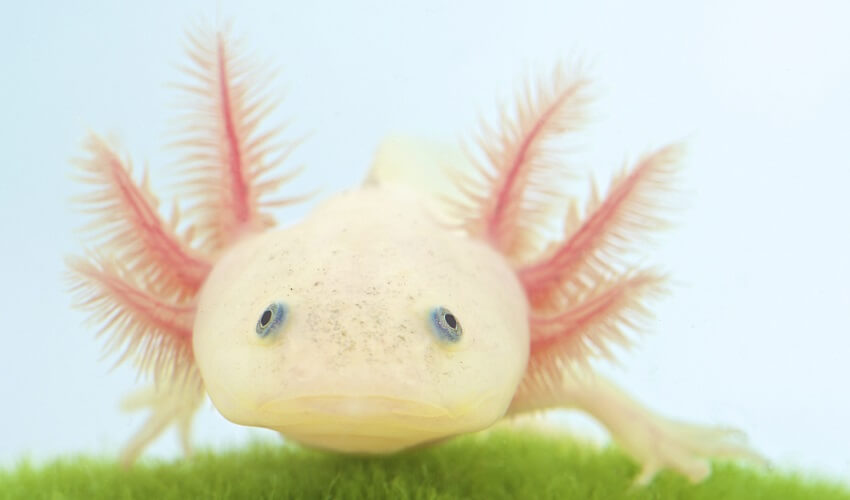
Class Agnatha
Jawless fish are very primitive fish that tend to scavenge or live as parasites. The lack of an upper and lower hinged jaw means they are only able to suck or rasp with the circular mouth.
Fish of class Agnatha have poor vision but well-developed senses of touch and smell. They live in freshwater or marine environments and their internal fluids mimic the osmolarity of the surrounding water, meaning they can breathe through the skin as well as absorb and excrete nutrition and waste. Agnatha skin can also produce copious amounts of slime that helps them escape from predatory jaws. The mucus they produce expands in water – less than fifty milligrams of mucus proteins can produce a liter of slime.
Class Agnatha is sometimes called an infraphylum or superclass. The correct taxonomic hierarchy lists Agnatha as an infraphylum. It describes animals with a two-chambered heart, cloaca, and gills. Members can be hermaphrodites (have the gonads of both sexes) or are found as males and females. They reproduce via external fertilization. No jawless fish have fins or limbs. Their skeletons are made from cartilage, not bone.
A vertebrate example of a jawless fish is the Pacific hagfish.
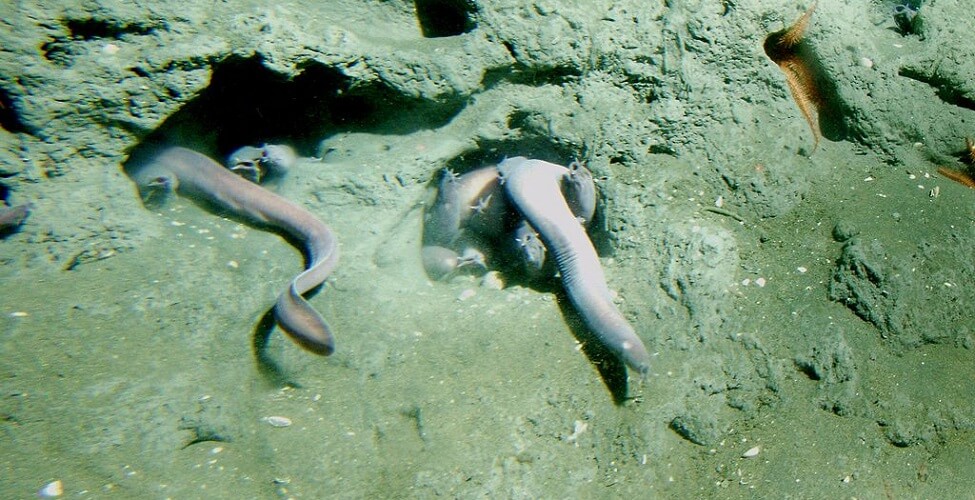
- Phylum: Chordata – animals with a notochord.
- Subphylum: Vertebrata – animals with a bony notochord and brain within the central nervous system.
- Infraphylum (sometimes class): Agnatha – a group comprised of hagfish and lampreys.
- Class: Myxini – hagfishes that can survive in very low oxygen environments; they have four hearts and are osmoconformers – their internal fluids are isotonic to the external environment.
- Family: Myxinidae – temperate marine hagfish with great slime-producing capacities.
- Genus: Eptatretus – ‘epta’ refers to the number seven and ‘tretos ‘ to holes – in this case, gills. Hagfish with seven pairs of gills make up the Eptatretus genus.
- Species: Eptatretus stoutii – species named by Dr. Stout, this hermaphrodite hagfish is specific to the Pacific ocean.
Class Osteichthyes
Cold-blooded Osteichthyes or bony fish have non-cartilaginous skeletons and make up the largest vertebrate class. Bony fish have an upper and lower jaw, many mucus glands on the skin, fins, five pairs of gills, and commonly a swim bladder to improve buoyancy.
These fish live in marine or freshwater environments and are usually taller than they are wide. Their scales overlap and, unlike many animals, bony fish have separate urinary, fecal, and reproductive tracts. They can lay vast numbers of eggs.
This class is so diverse and spread thickly across various hospitable and non-hospitable environments. Their unique characteristics have improved our understanding of health-related issues and even contribute astronaut comfort and survival during space travel.
A vertebrate example of a bony fish is the Atlantic salmon.

- Phylum: Chordata – animals with a notochord.
- Subphylum: Vertebrata – animals with a bony notochord and brain within the central nervous system.
- Class: Osteichthyes – bony fish with fins and five pairs of gills.
- Subclass: Actinopterygii – ray-finned bony fish (as opposed to lobe-finned)
- Order: Salmoniformes – salmon-shaped (including trout) that have strong swimming capabilities, are streamlined, have a swim bladder, and usually spawn in freshwater before migrating to the sea.
- Family: Salmonidaie – the only living (extant) ray-finned fish Family within the order Salmoniformes.
- Genus: Salmo – European species of salmon and trout.
- Species: Salmo salar – salar refers to the Latin verb that means ‘to leap’ and a characteristic of note when this Atlantic fish was classified – the leaping Atlantic salmon.
Class Chondrichthyes
The cartilaginous fishes possess upper and lower jaws, scales, and paired fins; however, their skeletons are made of cartilage. Without bone, blood cells are not produced in the bone marrow. Instead, red and white blood cells are produced in organs like the spleen.
Class Chondrichthyes fish are wider than they are tall. They do not have separate scales but dermal denticles that give them their characteristic sandpaper skin. Gills number five to seven and for some species, continuous movement is obligatory to ensure water (and so oxygen) flow. Many cartilaginous fishes give birth to live young; some produce eggs which are often packaged, such as in the case of mermaid’s purses – the leathery pouches that contain skate, ray, or shark eggs.
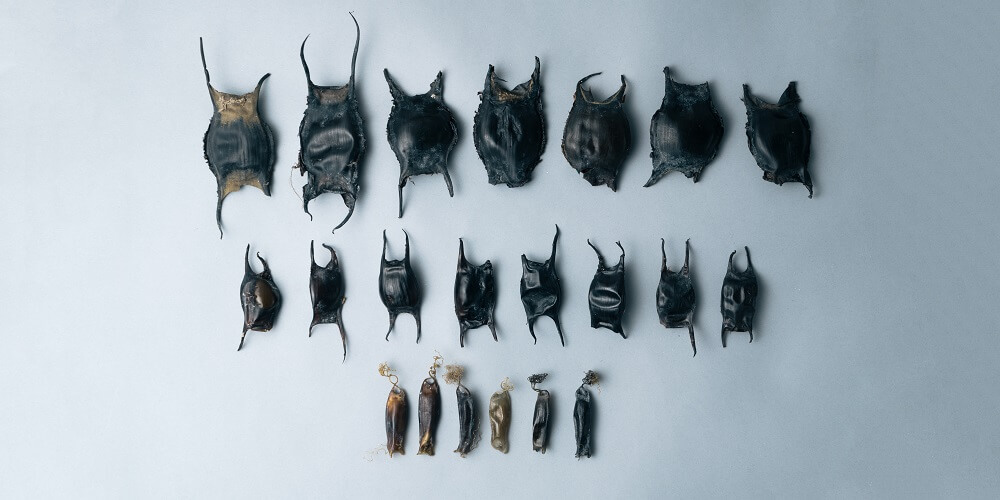
A vertebrate example of a cartilaginous fish is the large-tooth sawfish (carpenter shark):
- Phylum: Chordata – animals with a notochord.
- Subphylum: Vertebrata – animals with a bony notochord and brain within the central nervous system.
- Class: Chondrichthyes – jawed, cartilaginous fish with fins, dermal denticles, and five to seven pairs of gills.
- Order: Pristiformes – cartilaginous fish with a long, narrow rostrum (snout) supporting sharp teeth and a shark-like body, that give birth to live young.
- Family: Pristidae – only one extant (surviving) family and genus exist among the Pristiformes. All refer to the saw-like rostrum.
- Genus: Pristis
- Species: Pristis pristis – as ‘pristis’ means saw, this name is given to the most common sawfish species.

Vertebrate and Invertebrate
Vertebrate specifically refers to animals with a backbone that covers a spinal cord; an invertebrate describes animals without. Is a frog a vertebrate or an invertebrate? It is a vertebrate as it has a distinct backbone.
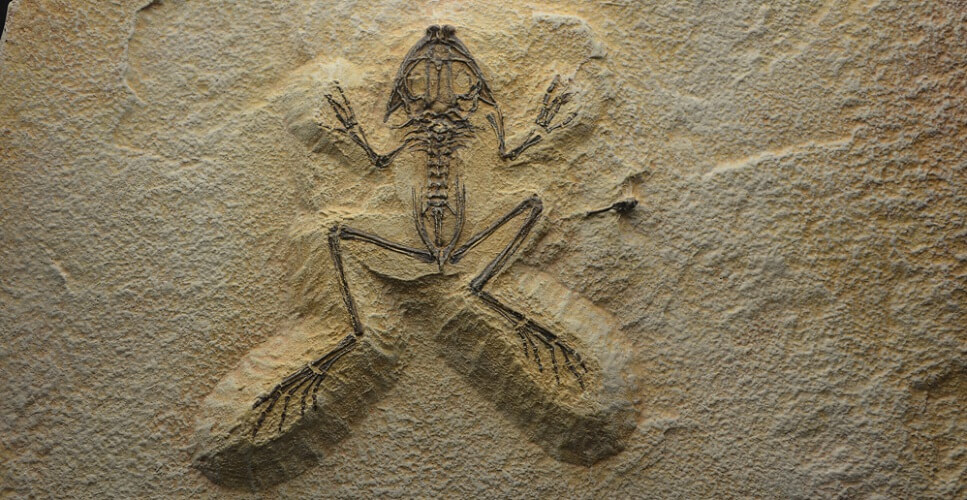
However, this isn’t the only difference between vertebrates and invertebrates. While they are both subphyla within the Kingdom Animalia and so multicellular, eukaryotic, and heterotrophic, similarities end here.
Nearly 98% of all animals are invertebrates; most of these are insects. Invertebrates do not have a highly-developed brain, internal skeleton (although many possess an exoskeleton), or a closed circulatory system.
Both vertebrates and invertebrates are Chordates; both feature a notochord at some stage of development. In invertebrates, the notochord remains a semi-elastic tube and will not become covered and protected with bony or cartilaginous tissue.

